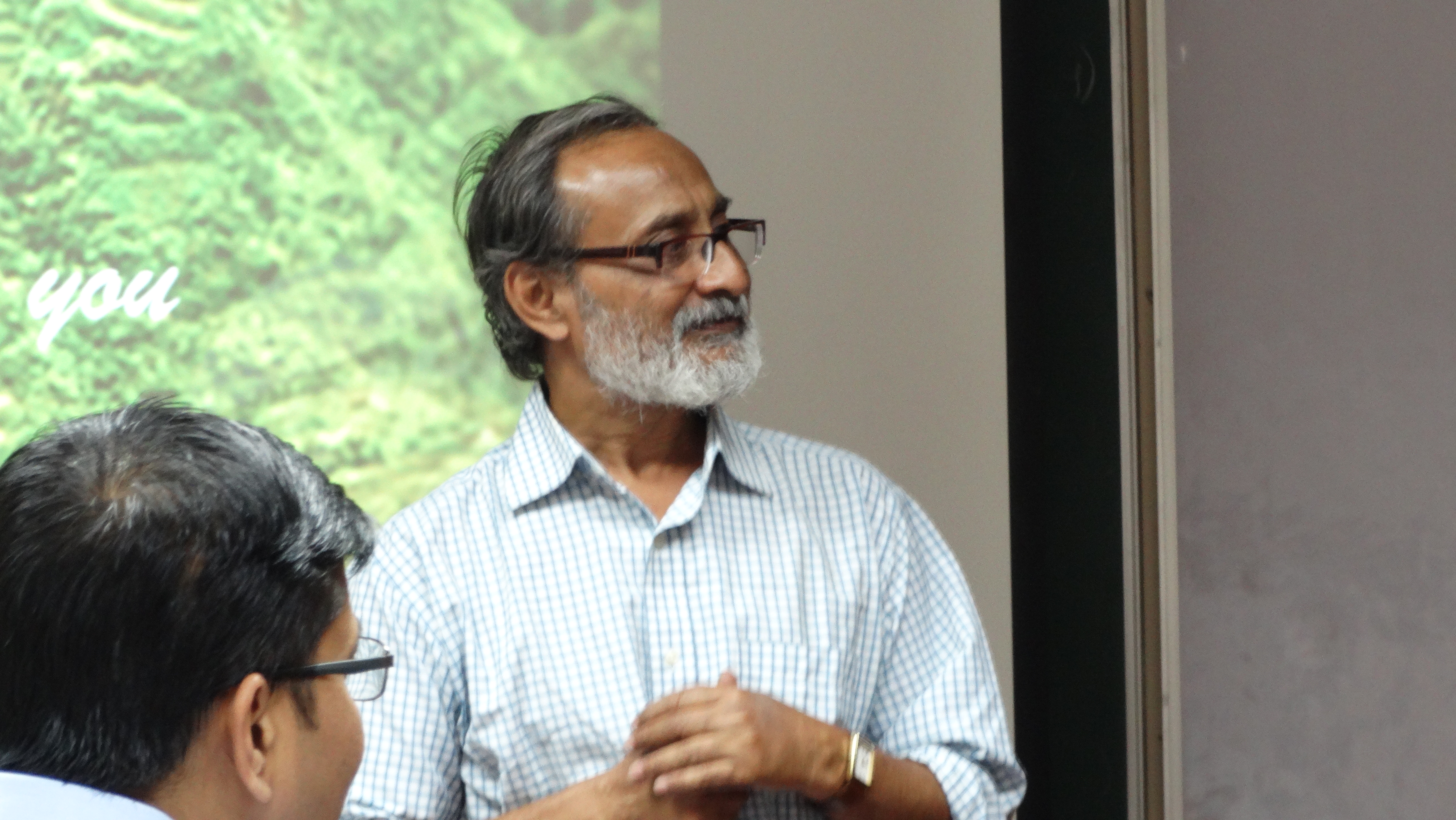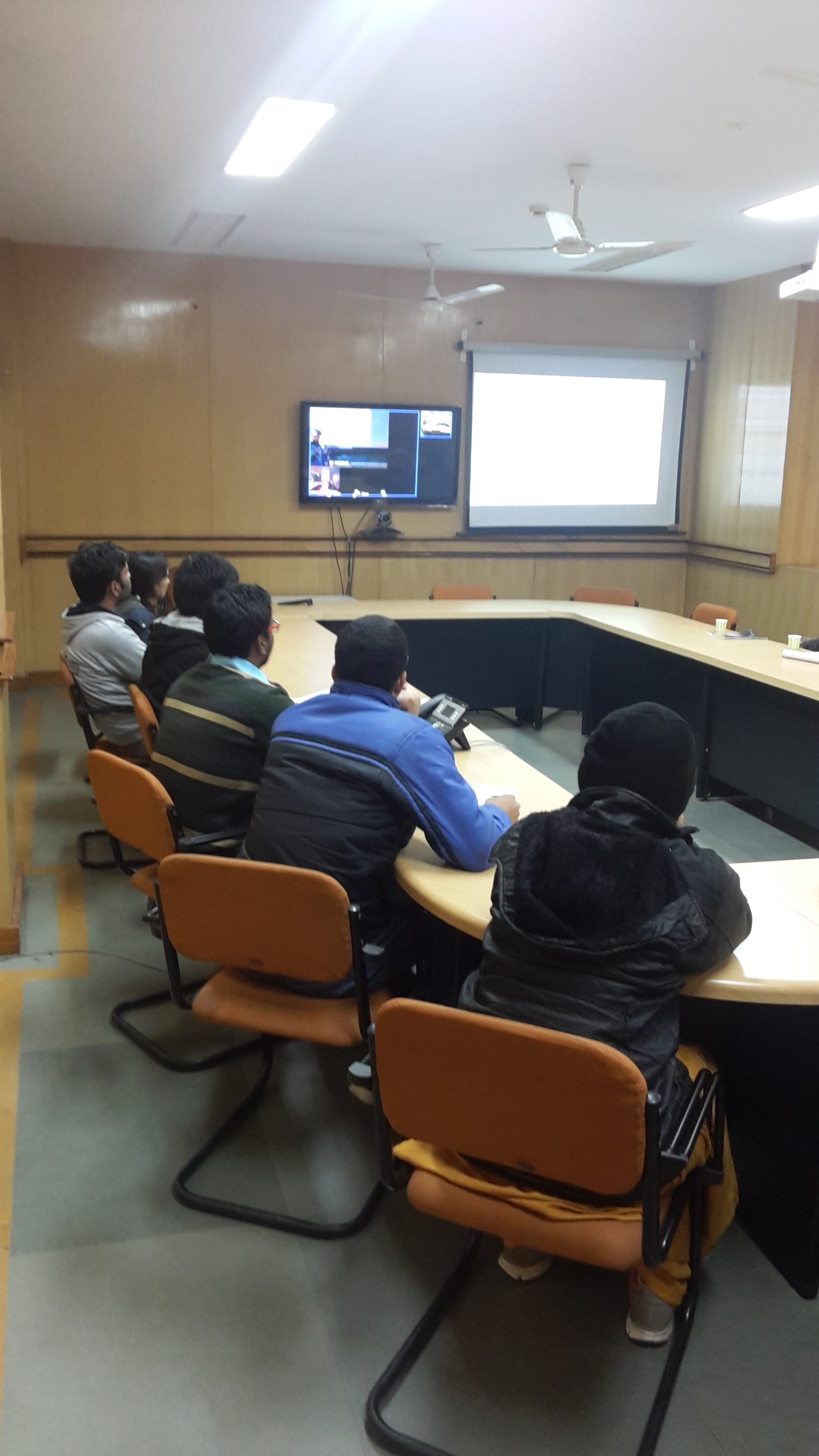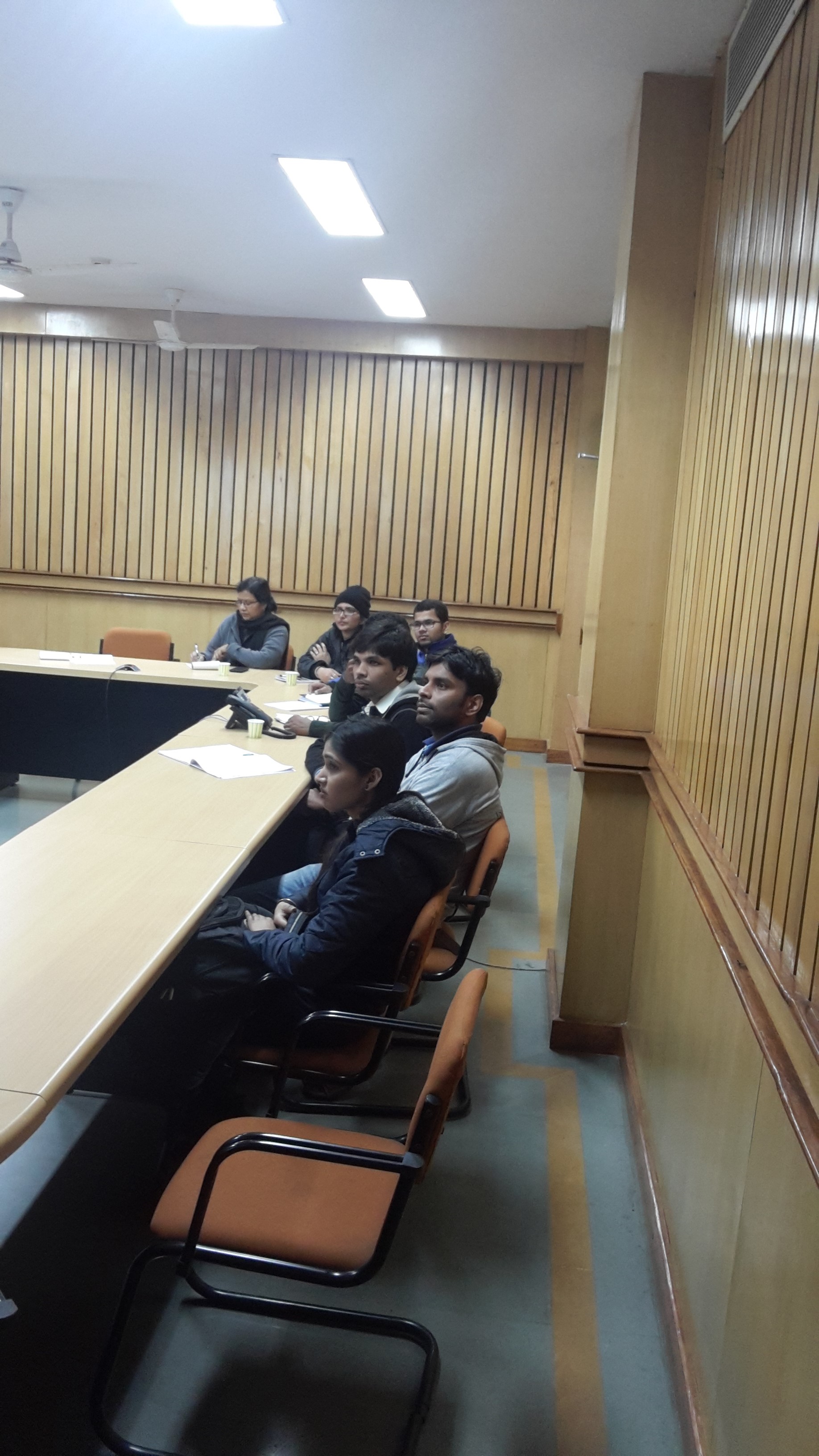International Day of Light (20 May 2022)
Pictures From the Day
Talk by Dr. Deepak Jain on Novel Optical Fibers for Light Sources and Optical Communication
| Time | Event |
|---|---|
| 10.00 to 10.15 am | Introduction to the event |
| 10.15 to 11.15 am | Talk 1:How to promote yourself as a young researcher? Seminar by: Dr. Deepak Jain Assistant Professor, IIT Bombay |
| 11.15 to 11.50 am | High tea break+ Optica membership and goodies distribution |
| 12.00 to 1.00 pm | Talk 2: Novel Optical Fibers for Light Sources and Optical Communication |
| 4.30 pm onwards | Student interaction session+ discussion on writing postdoc fellowship proposals |
Mini-symposium on Photonics
March 23, 2018
(Venue for all events is SL 215, CELP seminar room)
Photo Gallery
Inauguration and Guest Lecture
| Date | Speaker | Title |
|---|---|---|
| 3.00 to 3.10 pm | Introduction to the event | |
| 3.10 to 4.10 pm | Dr. Balaji Srinivasan,Dept of EE, IIT Madras |
Light beams with a Twist - Vortex Beam Generation & Amplification in Optical Fibers.
Abstract: ptical beams possessing orbital angular momentum (OAM), also known as twisted light beams or vortex beams have gained much interest in recent years due to the potential use in optical tweezers, high resolution microscopy, material processing, and free-space communications. Specifically, higher order OAM modes are quite attractive for the above applications as they provide multiple orthogonal light paths. Although several promising techniques exist in the literature for exciting such OAM modes, none of them are directly fiber compatible and not all of them can multiplex many OAM modes with low loss. |
| 4.10 to 4.30 pm | Tea break | |
| 4.30 to 5.30 pm | Dr. Pabitra Nath, Dept of Physics, Tezpur University |
Lab-on-phone: A new platform to obtain user-friendly sensing system.
Abstract: According to International Telecommunication Union (ITU), till 2016 almost 7 Billion people around the world are connected by the mobile network facility. These data signifies that irrespective of rural or urban region, a cellular phone is accessible everywhere. Out of these 7 Billion cellphone users approximately 40% of them can be considered as smartphone. A smartphone in general is equipped with different high-end opto-electronic sensors, fast central processing unit, an ever improving RAM-ROM and graphical user interface; which facilitate a user to use it for different applications. Again, for analysis and data processing, a need based mobile application can be developed within the phone itself. Due to vast availability of smartphones and its continuous improvement both in software and hardware part, effort has been made by the researchers around the world to convert it into a useful tool for sensing and imaging of various chemical and biological samples. In this presentation, a brief research activity related to design of smartphone platform sensing system currently undertaken by the speaker at his parent institution -Tezpur University will be discussed. |
| 5.30 to 6.30 pm | Prof. Kallol Bhattacharya, Dept of Applied Optics and Photonics, Calcutta University |
Pancharatnam phase and its applications in Optical Interferometry.
Abstract: In a landmark publication in 1956 Pancharatnam showed that if polarized light is brought back to its initial state of polarization through a series of polarization transformations, the polarization phase associated with the light beam is proportional to the solid angle subtended by the area of the Poincare sphere enclosed by the locus of the polarization path traversed by the light beam. What distinguishes polarization phase from propagation phase is the fact that the former is completely independent of the wavelength of light. The talk attempts to explain the origin of Pancharatnam phase, discuss optical configurations to realize dynamical implementation of Pancharatnam phase and explore its areas of application in phase shifting interferometry, digital holography, quantitative phase microscopy and total internal reflection microscopy. |
For more details view the program poster.
IEEE Women in Photonics Gallery
Poster Session
Prof. Deepa Ventakesh's Talk
Experimental Demonstration
International Year of Light 2015
The year 2015 has been designated as the International Year of Light by the United Nations, and is being celebrated throughout the world. To quote the Optical Society (OSA):"The International Year of Light and Light-Based Technologies (IYL 2015) is a global initiative that will highlight to the citizens of the world the importance of light and optical technologies in their lives, for their futures, and for the development of society.
As part of the IYL 2015 celebrations, we are planning to hold a one day symposium on 10 October 2015 at the Centre for Lasers and Photonics (CELP) in IIT Kanpur, and would be inviting select alumni to visit us. The event would showcase the contributions of our alumni who are working in the domain of lasers and photonics, and also highlight the recent developments in photonics research at IIT Kanpur. Further, this would also serve as an ideal platform to foster collaborations and exchange of ideas.
QIP course on Optics of Gravitational wave detectors
The five day school on Optics of Gravitational Wave Detectors provided broad introduction to experimental techniques of interferometric gravitational wave detectors such as LIGO.
The course includes tutorials on fundamentals of optics and related areas required for an understanding of GW detectors.
The course is supported by hands-on lab session and demonstration experiments which reinforce the theoretical concepts developed in the course. The course also introduces optics related software Finesse and COMSOL.
Course Coordinator: Pradeep Kumar K, Centre for Lasers and Photonics, IIT Kanpur, Kanpur-208016, India
Dates: 22-27th september,2014
Venue: PBCEC building for lectures. CELP Lab for experiments.
About the School
The five day school on Optics of Gravitational Wave Detectors provides broad introduction to experimental techniques of interferometric gravitational wave detectors such as LIGO. The course includes tutorials on fundamentals of optics and related areas required for an understanding of GW detectors. The course is supported by hands-on lab session and demonstration experiments which reinforce the theoretical concepts developed in the course. The course also introduces optics related software Finesse and COMSOL.
Registration:
Please send an email to This email address is being protected from spambots. You need JavaScript enabled to view it. to register for the course with the following details: Your name, designation, institute, and address. Graduate students who are interested in attending the course must provide a 50-100 word write up about your research. A limited number of undergraduate students will also be accommodated in the course.
Accommodation:Selected candidates will be provided accommodation in Visitor's Hostel on a twin sharing basis. Students will be accommodated in Hostels.
Travel allowance:Selected candidates will be provided traveling allowance (TA) as per QIP norms.
Speakers:Will be announced shortly.
Contact us: Pradeep Kumar K, Centre for Lasers and Photonics, IIT Kanpur, Kanpur-208016, India. Email: This email address is being protected from spambots. You need JavaScript enabled to view it.
Course contents (Tentative):
| 1. | Overview of gravitational waves and gravitational wave detectors. |
| 2. | Optics of Fabry-Parot cavities: Plane wave analysis, Audio frequency transfer functions, Higher order transverse modes, Geometric stability, Numerical simulations using Finesse. |
| 3. | Laser requirements for GW detectors: Frequency and intensity stabilization issue, High power laser design, Laser diagnostic and developments tools, Thermal-optical effects, Numerical simulations. |
| 4. | Noise in GW detectors: Thermal noise, thermal-elastic noise, Zener damping, Optical thin film coating, noise cancellation, measurement of coating thermal noise, Shot noise, Radiation pressure noise (classical and quantum), noise propagation in interferometers, Numerical simulation using Matlab. |
| 5. | Introduction to network and control systems: Linear system theory, network synthesis, feedback and feed-forward, Pound-Drever-Hall technique as control system, Numerical simulations using Matlab. |
| 6. | Quantum engineering in GW detectors: Squeezed light, generation and characterization of squeezed light, issues in audio-frequency squeezing, quantum non-demolition measurements in interferometers |
Hands-on Experiments:
Experiments such as (a) He-Ne laser characterization (b) Michelson interferometer (c) Study of Fabry-Perot cavity, (d) Beam profile and beam shape measurements of lasers (e) Optical mode cleaner (f) Second harmonic generation
Day#1:
| 9:00-9:20 | Inauguration of school |
| 9:30-11:00 | Lecture 1 |
| 11:00-11:20 | Tea Break |
| 11:30-12:50 | Lecture 2 |
| 1:00-2:30 | Lunch Break |
| 2:30-4:00 | Lecture 3 |
| 4:00-5:30 | Lecture 4 |
| 5:30-5:45 | High Tea |
Day#2:
| 9:00-11:00 | Lecture 5 |
| 11:00-11:20 | Tea Break |
| 11:30-12:50 | Lecture 6 |
| 1:00-2:30 | Lunch Break |
| 2:30-5:00 | Lab Session-I |
| 5:00-5:20 | Tea Break |
| 5:20-6:50 | Lecture 7 |
Day#3:
| 9:30-11:00 | Lecture 8 |
| 11:00-11:20 | Tea Break |
| 11:30-12:50 | Lecture 9 |
| 1:00-2:30 | Lunch Break |
| 2:30-5:00 | Lab Session-II |
| 5:00-5:20 | Tea Break |
| 5:20-6:50 | Lecture 10 |
Day#4:
| 9:30-11:00 | Lecture 11 |
| 11:00-11:20 | Tea Break |
| 11:30-12:50 | Lecture 12 |
| 1:00-2:30 | Lunch Break |
| 2:30-5:00 | Lab Session-III |
| 5:00-5:20 | Tea Break |
| 5:20-6:50 | Lecture 13 |
Day#5:
| 9:30-11:00 | Lecture 14 |
| 11:00-11:20 | Tea Break |
| 11:30-12:50 | Lecture 15 |
| 1:00-2:30 | Lunch Break |
| 2:30-5:00 | Numerical/Software Lab |
| 5:00-5:20 | Tea Break |
| 5:20-5:45 | Closing Remarks |
| 1. | LIGO: On the Threshold of Gravitational-wave Astronomy By Dr. Stanley E. Whitcomb | Click to Open |
| 2. | Lecture on Interferometer Configurations for Gravitational Wave Detectors by Dr. Stanley E. Whitcomb | Click to Open |
| 3. | Lecture on Noises in Gravitational Wave detectors by Dr. Stanley E. Whitcomb | Click to Open |
| 4. | Lecture on Control System in Gravitational Wave Detectors by Dr. Stanley E. Whitcomb | Click to Open |
| 5. | Lecture on Quantum Noise in Gravitational Wave Detectors by Dr. Stanley E. Whitcomb | Click to Open |
| 6. | Lecture on Gravitational Waves by Dr. Unnikrishnan. C. S. | Click to Open |
| 7. | Review of Optics esential for Gravitational Wave Detection by Dr. Pradeep Kumar K | Click to Open |
| 8. | Lecture Note-1(Review of Some Points) by Dr. Unnikrishnan. C. S. | Click to Open |
| 9. | Lecture Note-2(The Interferometer Detector) by Dr. Unnikrishnan. C. S. | Click to Open |
ULTRAFAST PHOTONIC PROCESSES AND INTERACTIONS Workshop
The workshop brought together researchers from the Indian Institute of Technology Madras, Chennai, India (IITM), Indian Institute of Technology Kanpur, Chennai, India (IITK), Dublin City University, Dublin, Ireland (DCU) and Optics Research Centre, University of Southampton, UK (ORC).
The event preceded with the latest developments in high speed and ultrafast photonic interactions and processes in systems from atomic ensembles to devices.
Event provided a valuable opportunity to exchange ideas in a relaxed environment, to create synergies and to establish and schedule new secondments between DCU, ORC, IITK and IITM.
Topics of Interest in Workshop
Optical Signal Processing and Generation
Wavelength conversion, clock recovery function, ultrafast processing of advanced modulation format signals, THz signal generation from non-linear materials and cognate areas of research and innovation.
Optical Materials
Silicon optical waveguides and silicon nanocrystal embedded optical waveguides, inorganic-organic hybrid interfaces and metal-dielectric photonic architectures, nonlinearity in polymers/suitable matrix, nanocomposites incorporating semiconductor quantum dots and cognate areas of research and innovation.
Ultrashort Pulse Detection, applications and simulation
Coherent XUV and soft X-ray generation using femtosecond lasers, XUV and IR autocorrelation techniques, THz streaking, ionization and fragmentation pathways for small quantum systems and plasmas, theoretical studies of small quantum systems in weak and strong radiation fields and cognate areas of research and innovation.
Biophotonics
he application of light to sensing and imaging in, and manipulation of, biological materials, particularly applied to biological and medical problems. It encompasses associated materials development, e.g. probes and platforms and the range of associated optical methods and spectroscopies.
List Of Participants
- Dr. Asima Pradhan
- Dr. R.K. Thareja
- Dr.Pradeep Kumar K.
- Miss. Ankita Jain
- Miss. Seema Devi
- Miss. Neha Goswami
- Mr. Udit Narayan
- Mr. Shyam Lal Gupta
- Mr. Ravi Pratap Singh
- Mr. Nishanth Chandra
- Mr. Mohammad Zaffar
- Mr. Bharat Lal Meena
- Mr. Gyana Ranjan Sahoo
- Mr. Syed Tajammul Ahmed





























.jpg)















